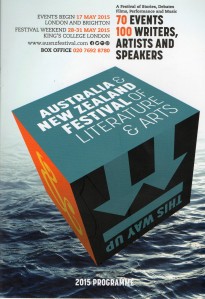FRACKMAN the Movie

Imagine this:
You decide to quit your life in the city and buy yourself a bit of land in Queensland. You build yourself a shack. Then you notice the bulldozers and you realise that people are digging beneath your property for coal seam gas. You are told you own the ground you live on but not the bit beneath it, and there’s not a thing you can do about it. You are offered compensation of $1,200.
You speak to your neighbours, who’ve been putting up with this for years. You learn their kids are suffering from headaches and nosebleeds. You try to get in touch with the gas company, and with the Queensland government, but all you get is fob-offs, and the odd conversation hanging around your truck, but nothing is resolved. You buy yourself a gas detector and discover there’s gas leaking from the pipes. You hold a gas lighter over the river and the water catches fire. The gas company eventually arrive and carry out their own checks and declare everything is fine.
You take to sneaking into the miners’ depot at night, fixing trackers onto their trucks and monitoring the water into which they are pouring their chemicals. Your own tasting makes you throw up but the sample you send to the lab is mysteriously held up, and proves negative.
You find yourself fronting protest movements and blockades. You travel to America and address the anti-fracking crowds there. Along the way you meet a lovely American girl on the internet but you don’t want her to visit because of the devastation. Eventually she does anyway, but by that time you’ve given up. You’ve lost the fight and sold your property to the gas company for an undisclosed sum.

That is the essence of the documentary film ‘Frackman’, which was made over a period of four years in Queensland. It is a very convincing film and the protagonist, Dayne Pratzky, is a compelling, force-of-nature, ‘accidental activist’. You feel angry, and ashamed, you vow to immediately ‘do something’, like divest yourself of any savings that turn out to be invested in the coal seam gas industry.
***
Later on you’re searching on Google and there, under ‘Frackman the Movie: More Fiction than Fact’, you find a riposte from the Energy Resource Information Centre. It’s headed
Frackman facts
and it goes through the film, item by item, repudiating all its claims and backing up the argument with data. It says that ‘A resource licence holder is required to have an access agreement in place before they can lawfully enter the property’. That makes sense. The film acknowledges that unlawful entry of private property is trespass, so the hint is to lock up and not allow anyone access. (Which begs the question, How did they get onto the Frackman’s land in the first place?)
It draws on apparent independent medical examiners who assert ‘a clear link cannot be drawn between the health complaints of some residents in the Tara region and impacts of the local CSG industry on air, water or soil within the community’, and that headaches and nosebleeds are all part and parcel of being a kid. They quote from a test undertaken on 43 wells by the CSIRO that ‘All were found to have some level of emissions, although in all cases these were very low compared to overall production’. And that ‘No evidence of leakage of methane around the outside of well casings was found at any of the wells sampled’.
http://www.energyresourceinformationcentre.org.au/conversation/frackman-facts/
***
So what is a person to think?
My personal instinct is to be very, very wary of coal seam gas mining; that insufficient research was done before they launched in, and that nobody can predict the possible long-term outcome, the effect on the water table and on the already delicate environment. No doubt the Energy Resource Information Centre – who are ‘funded by the natural gas industry, and make no secret of that fact’ – will dismiss the likes of Frackman, and of me, as ignoramuses who are needlessly scared of something we don’t understand. That’s another way of saying ‘If you don’t understand something then keep your mouth shut and your ideas to yourself.’ It’s the sort of thing bankers and financiers might say. It’s how the elite have always kept the ordinary people under control, through ignorance. It’s why people like William Tyndale were burnt at the stake for translating the Bible into English so ordinary people could actually read and understand it.

Quite apart from all that, coal seam gas, or unconventional gas, or any kind of gas come to that, is in the end a fossil fuel and therefore yesterday’s energy source. Surely of all countries in the world Australia, with its endless sunshine and its wild, wild weather, is the best place to be looking forwards for a change and concentrating its energies, so to speak, on developing renewables.
As, indeed, should we in the UK.



